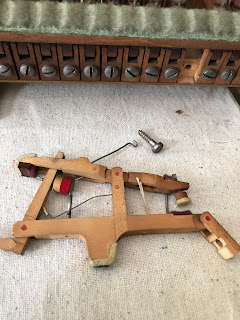This quilt top has been hanging in the closet for almost two years now. There are a few quilts I have bumped ahead to finish, knowing this one would probably take two days on the Longarm. The shop were I work has a long arm which I can use on any day off.
So anyway, since we had the week of the 4th of July off, I went in Monday and started.
Hopefully these pictures illustrate well the steps to take in quilting your quilt top.
First the quilt back is pinned on, It is always best to have your backing as well as your batting 3-4 inches larger than the quilt top. I'll then roll the backing back and fourth on the rolls to get the backing to stretch evenly, ending with the backing on the front roller.
Next take the batting and spread it out over the backing. Baste a straight line across the top of the batting.
Then lay the quilt top on the batting, lining it up with the previous basting line.
Now you are ready to quilt!
I wanted to custom quilt this instead of quilting an allover design. When I got to the Blue squares I forgot I needed a Circle guide to do the design I had drawn up. The lid too my sandwich container was perfect.
It might be hard to see but this is how the design came out
Almost finished.....
Here's taking it off the long arm.
Now it just needs to be squared up.
Here's the finished project!!
Also, here is the scrambled mess I started out with. My boss had encouraged me, when I first started long arming, to draw out designs before it is taken to the longarm.
If anyone is new to long arming and has any questions feel free to ask. I'll answer to the best of my knowledge.
Thank you for reading this post.





















































